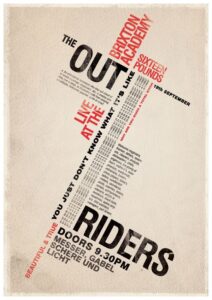Tschichold set forth rules for standardization of practices relating to modern type usage. He condemned all typefaces except for sans-serif types, advocated standardized sizes of paper and set forth guidelines for establishing a typographic hierarchy when using type in design. While the text still has many relative uses today, Tschichold eventually returned to a classicist theory in which centered designs. He felt that the old ideas of design must be discarded, and new ideas developed. Functional design means the abolition of the “ornamentation” that has reigned for centuries.
Gerstner’s influence on typography is significant to the history and theories of graphic design. Gerstner characterizes design as selecting specific components and combining them based on informed choices and understanding of a problem. He was solution oriented and believed all design hinged on the understanding of a problem to create criteria. He believed feelings do not prompt creative decisions, but by intellectual criteria. You would compare your solution to the criteria defined by the problem in order to evaluate the validity of a design. For Gerstner, these criteria took the form of a systematic set of rules or parameters, which he referred to as a programme.
Josef Müller-Brockmann work is best known for its simple designs and clean use of typography. Brockmann believed in using a grid as an ordering system expresses a certain mental attitude because it shows that the designer conceives his work in terms that are constructive and oriented to the future. Rules strongly influenced Brockmann, which he observed throughout his career. We can summarize these rules using very strict composition grids, aim photographs to avoid emotions, the importance of rhythm, harmony, mathematical and geometric compositions.
For me, all three designers believe that form must follow function. How you use hierarchy in your design. That the use of a grid is essential to your design. What typeface you should use? What you want your audience to get from your design. You must understand what you are designing to see if there are any problems that may arise. You must be creative in your intellectual criteria in determining the aesthetic of your design. Understanding the components of a design and how to combine them.
This is an example that embodies what all 3 designers are talking about. Form follows function. Form follows function refers to the idea that the function of a body part dictates the form of that body part. Using a grid, typography, and hierarchy gives the idea of the functioning body, which shows the form of the body.




Good report. Next time add more of your own opinion about following the grid and systems.
Please use Pro Writing Aid before you post.